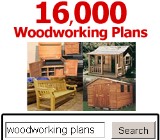1. Plant Flowering Plants In Large Clusters
Bees like to buzz around from one flower to the next in short order. They instinctively look for large clusters of flowers so they can get more nectar per minute of work.
Another way of looking at this is that Mother Nature has designed the bee to be a highly efficient worker!
2. Types Of Flowers To Plant
Daisy-like flowers tend to attract bees better than tubular flowers because most species of bees have an easier time getting at the nectar. However, having said this, some tubular flowers like foxglove tends to attract certain species of native bees. So, please know that there is no hard fast rule about what type of flowers to plant, no matter what anyone tells you.
The key point to remember is to plant a wide variety of different colors, shapes, and sizes. This way, you'll not only attract more bees, you'll attract more species of bees! At Botanical Interests seed, they offer a unique, high-quality line of organic and untreated garden seeds not available in discounting chain stores. They have over 600 varieties, 140 of which are certified organic. All seed varieties are untreated. None are GMOs.
Try to avoid flowers that have been too "inbred" because the nectar quality in these flowers is often compromised while artificially selecting for certain unusual traits. Signs of this include variegated varieties and flowers that seem unnaturally large or have an unnatural color.
3. Plant Sequentially Blooming Flowers In Your Yard
If you already have flowers in your yard that bloom in the spring but none that bloom in the summer or fall, you're not likely to become a favorite bee hangout! Bees communicate with each other and they know where the best spots containing flowers that bloom almost continuously across many months.
In most places in the United States, you can achieve some kind of blooms nine to ten months out of the year if you intentionally plan it this way.
4. Provide Bees With Shelter and a Place To Nest
Just like most humans like their permanent domicile to be near grocery stores, bees like to live near areas with flowering plants! Therefore, if you can provide bees with both shelter AND food, your yard will become a mecca for bees! If your yard is big enough (and the neighbors don't complain), try to leave a big patch of natural vegetation. This should be an area where you never mow, you seldom pick up sticks, and you don't rake the leaves! Bees will love this area for resting and nesting!
You can also simply leave an area of barren dirt or mud near your blooming plants since many bees like to burrow underground. If you are living in a highly urbanized area, you may want to consider providing bee houses. In fact, rooftop gardens in urban areas often provide bee houses to attract bee pollinators that would otherwise never live there. You can buy very attractive and functional bee houses from many online gardening stores or check with your local nurseries. You may even start a cottage industry if you build them in your spare time!
5. Plant Native Plants To Attract Native Bees
As you've likely heard, native bees are rapidly declining for reasons that are not yet completely understood. By most estimates, we have lost more than fifty percent of our native bees. What's even more troubling is the fact that we are losing entire colonies of bees virtually overnight by a mysterious phenomenon called "colony collapse disorder" (CCD).
You can help rescue our native bees by planting flowering plants that are native to your region.
To determine the best native plants to plant in your specific yard, contact a native plant nursery in your city or region. You can also call your local watershed council or other habitat restoration group and ask them for suggestions.
If you have a beekeepers' club in your area, this is usually an excellent source for finding out about native plants that bees like.






